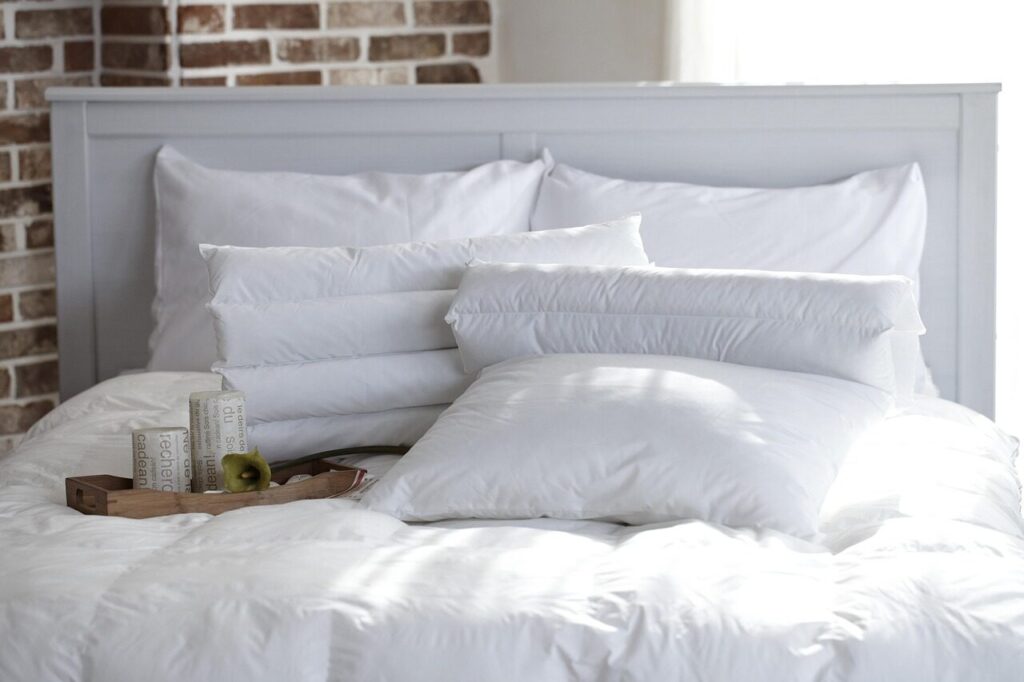Bedding might look spotless, but beneath the surface lies a hidden mix of sweat, oil, skin cells, and dust mites. Over time, these particles build up, creating an environment that affects your health and sleep. How often you wash your bedding can influence your skin, breathing, and overall rest quality. A consistent cleaning routine doesn’t just freshen up your sheets; it also supports better sleep hygiene. This guide breaks down how frequently to clean every layer for a fresh and healthy night’s sleep.
Why Bedding Hygiene Matters

Clean bedding goes far beyond comfort; it plays a crucial role in your health. Each night, your body sheds thousands of skin cells that attract dust mites and bacteria. Combined with sweat and oils, this creates the perfect breeding ground for microbes. Neglecting regular washing can lead to allergies, acne, or congestion. Clean sheets ensure a sanitary space, helping you breathe easier and rest better. Maintaining bedding hygiene keeps your immune system strong and your sleep truly restorative.
How Often to Wash Your Sheets
Experts generally recommend washing sheets once every week or at most every two weeks. Since you spend nearly a third of your life in bed, your sheets absorb a surprising amount of dirt, sweat, and natural oils. During summer or in humid weather, washing weekly is vital to prevent bacterial buildup. If you have allergies or sensitive skin, frequent cleaning helps reduce irritation. Regular washing keeps your sheets soft, fresh, and safe for daily contact with your skin.
Pillowcases Need Extra Attention

Pillowcases come into direct contact with your face, hair, and skin, making them the dirtiest part of your bedding. Dermatologists recommend washing them every three to four days. Oils, skincare residue, and hair products quickly transfer onto the fabric, clogging pores and causing breakouts. If you wear makeup to bed or have oily skin, increase washing frequency. Clean pillowcases reduce acne, protect your hair from buildup, and maintain a crisp, inviting feel every night.
Blankets and Comforters
Unlike sheets, blankets, and comforters don’t need weekly washing, but still require regular care. They should be cleaned every two to three months to remove dust, sweat, and odor. If you have pets or allergies, monthly washing is ideal. Using a top sheet can extend the time between washes by keeping the comforter protected. Always check the care label materials like down or microfiber need specific settings to stay fluffy and durable while avoiding damage in the wash.
Mattress Protectors and Toppers

Mattress protectors act as a shield, catching sweat, spills, and allergens before they reach your mattress. However, they aren’t self-cleaning. Wash them once every two months or monthly if you have allergies or night sweats. Machine-washable protectors make the process simple. Regular cleaning prevents unpleasant odors and bacteria buildup, extending the mattress’s lifespan. A clean protector ensures your bed stays fresh, hygienic, and comfortable for years, supporting both sleep and overall wellness.
Pillows: The Forgotten Essentials
Pillows silently collect sweat, oils, and dust mites over time. To keep them clean and supportive, wash them every three to six months. Most down and synthetic pillows are machine washable, but memory foam should be spot-cleaned. Using dryer balls during drying helps maintain fluffiness and shape. Replace pillows every one to two years for optimal neck support and freshness. Regular care prevents odor buildup and keeps your sleep surface cleaner and healthier long-term.
Seasonal Bedding Adjustments

Your washing routine should shift with the seasons. In summer, heat and humidity cause more sweating, requiring weekly washes. In cooler months, washing every two weeks may be enough. Switching between breathable fabrics like cotton in summer and flannel in winter enhances comfort. Seasonal laundering keeps dust and allergens in check. Adjusting your routine ensures your bedding stays inviting, fresh, and cozy no matter the temperature or time of year.
Laundry Tips for Bedding Longevity
Using the right laundry techniques helps bedding last longer. Always wash sheets in warm or hot water to kill germs, but check fabric care labels first. Avoid harsh bleach or strong detergents that weaken fibers. Mild detergents preserve softness, while complete drying prevents mildew. Rotating between multiple sheet sets reduces wear and keeps your bed fresh. With gentle washing and proper care, your bedding will feel softer and stay vibrant for years.
Signs It’s Time to Wash Sooner
Even with a schedule, your senses often tell you when to wash early. A musty odor, sticky texture, or itching after sleep means your bedding is overdue for cleaning. Allergies, acne, or sneezing can also be signs of dust buildup. After being sick or sweating heavily, wash immediately to remove bacteria and viruses. Clean bedding not only promotes recovery but ensures your bed remains a safe, peaceful space every night.
Building a Healthy Sleep Routine

Clean bedding is just one part of good sleep hygiene. Fresh sheets enhance relaxation and temperature regulation, allowing deeper rest. Make your bed each morning and keep food or pets away to maintain cleanliness. Investing in breathable, high-quality fabrics helps regulate moisture and simplifies care. When paired with consistent sleep habits, fresh bedding turns your room into a restful sanctuary, promoting both mental calmness and physical rejuvenation night after night.
Comments